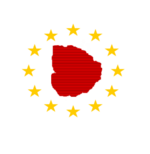Higher Education in Makko Oko
This article is incomplete because it is pending further input from participants, or it is a work-in-progress by one author. Please comment on this article's talk page to share your input, comments and questions. Note: To contribute to this article, you may need to seek help from the author(s) of this page. |
Higher Education in the Empire Of Makko Oko refers to tertiary education after graduation from a secondary institution. Higher educational institutions are all privately owned and operated, with there being over 500 private institutions as of 2023. Regulation of these institutions is very little, with the government having a hands-off approach compared to lower forms of education.
History
Before The Republic
Establishment Of Higher Education & Growth
Tuition Wars & Public College
Establishment Of DYNAMIC2MAJOR Program
Empire Of Makko Oko
Tuition & Financial Aid
Higher education in Makko Oko isn't free, and as of 2023, there are no regulations on tuition on how it can be setup, meaning colleges can use deceptive marketing and advertising with little to no penalty. During the era of the Republic, the Deceptive Marketing Act was in force but didn't retroactively apply to colleges. The government is relatively uninvolved in regards to tuition, with no government aids or grants being offered or provided to students in need or otherwise.
The majority of aid that students in the nation obtain are loans from banks, with banks being the one and only provider of student loans in the nation, unlike other nations, which have loan servicing companies. For free aid, scholarships can be obtained but given the relative lack of that form of aid that's provided, they're almost always highly competitive. 40% of college graduates end up not advancing to university.
It's estimated that 85% of the population as of December 2022 have needed at least one form of aid to help go to college, with around 22% of them being given at least one scholarship. There have been calls by students and parents to help make higher education more accessible.
Types Of Institutions
In Makko Oko, the first President of the Republic, Julius Knudsen, set the foundation for higher education in the nation. Together with Gene Alvarose, a professor teaching political science and government at Ferwert University, Julius established the top-down higher education model. This model led to the designation of two types of institutions, college, and university.
College is for lower-level education and for learning moreso than research. Colleges are what the majority of people attend today, and are also cheaper than universities. Universities are higher-level education meant for research, thesis programs and experiential learning. The model was designed with efficiency in mind, resonating with pre-government times of the Phoenix Island Tribe. This meant the removal of Associate's Degrees and more direct major-related courses in the curricula.
For the tribe as a government, they saw science and math as essential courses and taught them heavily, leading Makko Oko to become one of the top destinations for higher learning by the year 2000, meanwhile English Literature courses were dropped completely. They would make their return in 2008 under new President Harold Zenonis under a new program titled DYNAMIC2MAJOR, which is a program still active today that has separate allowed curricula for every major, meaning that all of them have a different set of courses that can be very unique to one another.
Also unique to the nation are the removal of so-called degree shaming via the removal of names like Associate's and Bachelor's. Instead, you have a simplified system of Advanced Degree for Colleges and Master's Degree for Universities. Many think that there's no difference of the systems.
